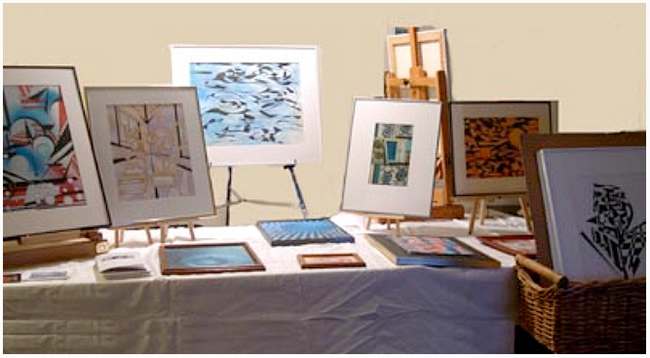
Statement
The varieties of visual perception are Amy Ione’s primary artistic interest. Her earliest experiments intuitively introduced her to the nature of our perceptual experience. Discovering that scientific studies in neuroscience and psychophysics complemented her work as a painter led her to add her voice to the academic arena in order to specifically address aspects of a creative practice that were underexposed in creativity research. This site includes an archive of her creative expression as an artist. Her academic and illustrated books include Innovation and Visualization: Trajectories, Strategies, and Myths (Rodopi, 2005); Art and the Brain: Plasticity, Embodiment, and the Unclosed Circle (Brill, 2016); Neuroscience and Art: The Neurocultural Landscape. (Springer, 2024); Nature Exposed to our Methods of Questioning (Diatrope Press, 2003) Studio Ione 2003 (Diatrope Press, 2003); and the illustrations for Tjotjok (Diatrope Press, 2003).
In a 2025 review of Neuroscience and Art: The Neurocultural Landscape publication, Robert Pepperell wrote:
"So, it is refreshing—and encouraging for those committed to genuine art–science integration—to find a book with the title Neuroscience and Art that treats art as a deeply complex human activity while, at the same time, harnessing science in its broadest sense as a mode of inquiry that can reveal rather than obscure that complexity." [Full review here]
Dr. Frank W. Stahnisch, a historian of medicine and neuroscience, reviewed Art and the Brain: Plasticity, Embodiment, and the Unclosed Circle (Brill, 2016) in a 2017 issue for the Journal of the History of the Neurosciences. He wrote:
The book …includes stimulating considerations about individual perspectives on human memory and the imagination, as these originated from modern neurological representations in cortical physiology, experimental psychology, and evolutionary perspectives on brain development. The strength of "Art and the Brain" certainly lies in intriguing theoretical discussions of framing structures and visual foundations through the deep historical contexts of the neurosciences. Furthermore, Ione’s personal experiences as an active artist offer many reinterpretations of the artistic principles at work during different historical neurological media representations within the multilayered discussions presented in this volume. [Full review here]
In a 2005 review of Innovation and Visualization: Trajectories, Strategies, and Myths, John Danvers wrote:
"It is this kind of historical insight and connectivity which makes Innovation and Visualization such a stimulating text to read. With its combination of scholarship and lucidity, fascinating information and provocative argument, this lively and intelligent book will be welcomed by the academic community and by many general readers, who will enjoy Ione’s eloquent cross-fertilisation of ideas and her healthy disregard for disciplinary boundaries." [Full review here]
In summary, both Amy Ione's art and academic research have provided a means to communicate about art as an expressive activity rather than an intellectual exercise. Ione's art has been commissioned by the City of San Francisco, has been exhibited extensively in the United States and Europe, and is found in many collections.
Powered by Artwork Archive
